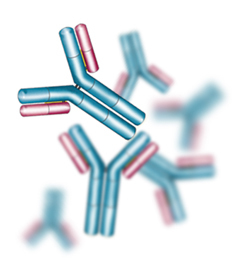Pigment Epithelium-Derived Factor (PEDF) is an extracellular glycoprotein with a molecular weight of 50,000 identified in the interphotoreceptor matrix, vitreous, aqueous humour, CSF, and serum of several vertebrate species. The PEDF protein is a multipotent neurotrophic factor that acts upon various types of neurons. For example, PEDF displays a potent neuronal differentiating activity on human retinoblastoma cell lines.
Besides its neurotrophic properties, it has also been reported that PEDF is associated with senescence and angiogenesis. The PEDF gene, termed EPC-1 (early population doubling level cDNA-1), is induced in young human fetal WI-38 lung fibroblasts cells upon entry into the G0 state, while senescent cells fail to express it. It has binding affinity for glycosaminoglycans and cell-surface receptors in cells that respond to its stimuli. The overall protein conformation of PEDF resembles a member of the serine protease inhibitor (serpin) superfamily. However, it does not inhibit known serine proteases and its neurotrophic properties are independent of its protease inhibition potential.


 010-64814275
010-64814275
 當前位置:
當前位置:





 010-64814275
010-64814275
 010-64814275
010-64814275
 2850669802
2850669802